The favorite of landscape designers and amateur gardeners, thuu is easily grown in almost any region, including in the harsh Urals.
High frost resistance of individual types of Tui, its unpretentiousness in care and the overall life of the evergreen coniferous shrub or a tree one of the most popular decorative plants in the Urals.
How to grow so far in the Urals, how to plant a plant and what agrotechnical techniques will be mandatory in care of the culture - in this selection of material.
Tuya, description of the plant
Thuja or, as it is also called, a vital tree is a coniferous plant of the kind of gone, family of cypress.
- Thuya, mostly, has the form of evergreen tall shrub; Less often meet (up to 6 m stem diameter) and high (up to 70 m) Tui trees.
- The needles in young plants are soft and needle, adult copies are bright green soft scales.
- Thuja is a monocoa plant, whose seeds ripen in autumn in small cones.
- Like any other coniferous plant, most of the Tui varieties exude a characteristic fresh flavor of needles.
- Thuja is considered undemanding culture, it is distinguished by high frost resistance and endurance to unfavorable conditions (smoke, zajanity) of industrial zones.
- Due to the high decorative qualities, durability and unpretentiousness in care, the plant is widely used in landscape design, for landscaping allests, garden-park zones or in household sites.
- Tui has 5 species (Korean, Western, Giant, Japanese, Sichuan), of which the most suitable form for cultivation in the Urals is Tui Western.

Tuya Western, Plate Features
- North America is considered the natural range of this type of Tui.
- Due to high winter hardiness and drought resistance, it is also widely cultivated in the regions of the middle lane of Russia and in the Urals.
- Tuya Western belongs to slow-growing trees with a long period of life. The age of a mature thuu can reach 100-150 years.
- The height of the plant in culture rarely exceeds 20 m, although larger specimens may occur in a wild form.
- Croon Tui Western has the form of a pyramid or compact oval. The scratched fine needle is updated every 2-3 years, gradually falling out with small twigs.
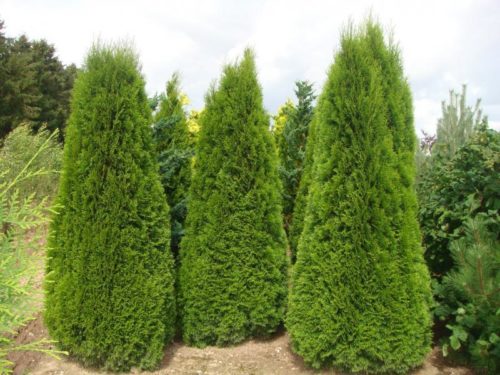
- Some varieties of evergreen Tui Western for the winter, still, change, color of needles: it is discolored to a light green or yellowish brown shade.
- Cones from the Tui Western small, ovoid shape. Each bump retains two yellow seeds.
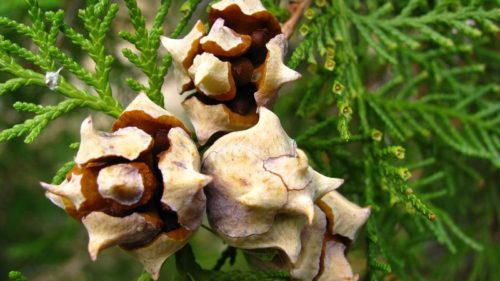
- The tree bark is originally smooth and brown, with age becomes grayish, with deep cracks.
- Unpretentious to a polluted ecological environment, good survival after landing, cold resistance and endurance made one of the most common decorative plants in many regions of Russia, including in the Urals. Tui Western belongs to the zone of frost-resistant plants from 2B to 8b, allowing to transfer without shelter to -36 ° C.
- Tui Western is the most common appearance used by landscape designers and gardeners in the design of diverse areas (parks, squares, local territory, etc.).
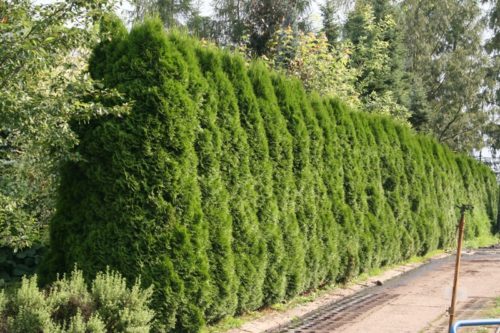
Thuja for the Urals, varieties
There is a huge amount of Tui Western varieties. Decorative types of Tui distinguish:
- in the form of the crown (spherical, wearing, pyramidal);
- on the color of the leaves (volatile and green);
- height (tall - from 5 m, dwarf - from 3 to 5 m, miniature - up to 3 m).
Consider the most frost-resistant varieties suitable for cultivation in the harsh climate of the Urals.
- Thuja Danica (Danica).
The miniature grade of the 3rd climatic zone, spherical shape and a height of about 50-60 cm. Grows slowly (about 5 cm per year), used for the design of living hedges, borders, alpinarias. Reddish bark peeling. Breeding cuttings. The variety is shadowed and drought-resistant.
- Thuja Globosa.
The lowered slow-growing variety, reaching a height of no more than 2 m, has a spherical dense form of the crown, refers to the 3rd climatic zone. Green needles, for the winter acquires a brownish or gray-green shade. It is used for landscaping balconies, creating alive hedges and borders, design of stony slides. Shadowed, drought resistant.
- Tui Golden Globe.
Highly frost-resistant grade of the 2nd climatic zone, with a spherical crown. It grows slowly to 1 m in height and width, an annual increase - 7-10 cm. The needles are golden yellow, inside the crown - green. Thuya does not need a haircut, moisture and light and light. It is used in landscape compositions of rocaries and alpinarias.
- Thuja Vagnery (Wagneri).
Fast-growing semi-classic (3-3.5 m) variety with a narrow conical dense crown refers to the 4th climatic zone. The needle has a gray green shade, which is converted to a saturated copper in winter. The light-headed grade is most often used in single or allest landings.
- Thu Woodwardii.
A low (up to 2 m), a slowly growing variety, with a surround crown of spherical shape, in the winter hardiness - 4th zone. The needles are dark green, does not change the color all year round. Used when making mixtures as a central plant, group landings are also well looking (for example, on the sides of the alleys).
- Tuya Hoseri (Hoseri).
Thuja of the 3rd climatic zone, grows slowly, not more than 2 m in height. The variety has a spherical shape of the crown with a diameter of about 60 cm, which with age acquires a more flexible form. Shaded, but prefers solar open areas. The corrective trim does not need, suitable for container growing, cutting borders and creating landscaped, wood-shrub compositions.
- Thuja Brabant (Brabant).
The variety is characterized by a high growth rate (up to 40 cm per year), a conical shape and a 3rd zone in terms of winter hardiness. The tree is the Giant, this grade of the Tui can reach a height of up to 20 m, and the diameter of the crown is up to 4 m. Bright green needles, it does not change its color during the year. The variety is not demanding in caring, hardy.
- Thuja Sunkist (Sunkist).
It is highlighted by high frost resistance (zone 2b) and a conical dense, slightly empty, crown. Low variety (3-5 m), grows slowly. The color of the needle changes with age from the golden to the lemon shade, and by winter the foliage is painted in a bright bronze color. The variety is light-headed, perfectly tolerates forming trimming. It is planted as soloing single landings, as well as in a variety of colorful group compositions.
- Tyu Tyny Tim.
The miniature slow-growing variety, reaching a height of no more than 1 m, ballform, belongs to the 3rd climatic zone.
- Thuja Holmstrup (Holmstrup).
Refers to the 3rd climatic zone, a tree - semi-colored (up to 3-3.5 m), with a conical form of the crown. The needles are dense and lush, does not change painting throughout the year. The grade tolerates trimming well, is distinguished by low growth rates (10-12 cm per year). Apply both solitary plant planting and group.
- Thuja Smaragd (Smaragd).
It has medium frost resistance, needs shelter for the winter. The grade grows slowly, high up to 5 m high, has a colonum-like crook. Needles rich green color, the color does not change during the year. The variety is suitable for container growing, creating garden figures or alive hedges, does not require frequent haircut. Frequently used as a dominant solitator of a single landing.
When choosing a Tui variety for cultivation in the Urals, attention should be paid not only to its decorative characteristics, but mainly to the degree of frost resistance, the overall unpretentiousness and viability of the variety.
In addition, the types of thuu differ in the quality of coniferous plants: alone absolutely do not need trimming, others require a systematic haircut; Some are demanding to the composition of the soil and constant agrotechnical processing, others are not capricious and grow in almost any terrain.
Thuja in the Urals, landing features
The harsh continental climate of the Urals requires the gardeners of certain rules and skills when landing any plants. Choosing a frost-resistant Tui variety, it is important to choose an optimally favorable landing place, competently prepare the landing pit and plant a plant into the ground.
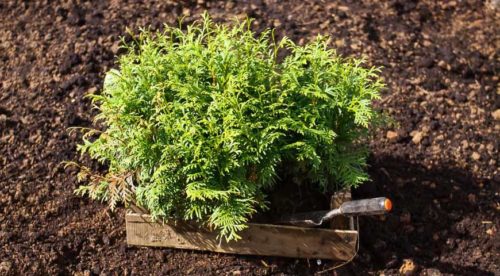
Place for landing Tui in the Urals
- Given that most of the Tui varieties are light-minded plants, it should be selected for landing, open and protected from drafts and winds, a plot. Great for planing the Tui is also a light half. Such moderate exposure to the sun rays will prevent the dehydration of the plant (which can happen on the open sun), sweating the color of the needles and will allow him to be better overwhelming.
- Thuja is unpretentious to soils and can grow on enough poor soils: in clay, samp and even wetlands. But, more nutritious soil will provide the best development of the coniferous plant. The optimal version is the hardening ground with sand and peat.
Preparation for landing Tui in the Urals
- It is recommended to plant in the Urals in the spring that the plant is successfully acclimatized and stuck. In the case of autumn landing, there are risks of the Thui frozen in winter.
- Buying Tui seedlings, you should pay attention to the appearance of the plant. Healthy copies will be strong and well developed, with bright, glossy, saturated color, cheese. If the bark seedling has damage or reinstalling, the signs of any diseases are visible on the plant - such seedlings should not be purchased. The best option is to buy seedlings with a closed root system in special local nurseries.
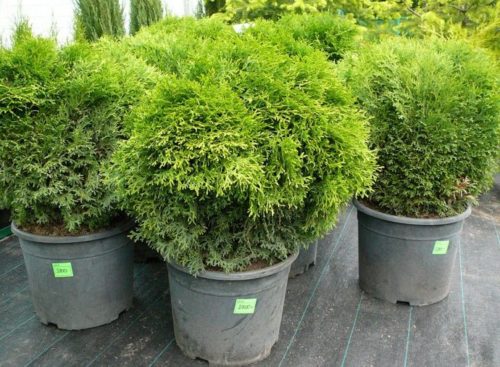
- The planting pit is prepared depending on the size of the root system of the car's seedling. Approximately, the pit should be 30-40 cm wider and deeper by an earthen coma (or roots) of the planting seedling.
- At the bottom of the pits, the drainage layer is falling asleep (from clay, broken bricks), then organic fertilizers (compost, overwhelmed manure) and a mixture of a delicate ground with sand and peat. From the soil, there is a small hollyk, on which the roots of the plant (or the earthen com with roots) are placed.
- Before planting seedlings with an open root system, the roots are better to place a few hours into the container with water temperature. Additionally, in the water you can add a root formation stimulator.
- The distance between coniferous plants can be from 1 to 5 m. It depends on the grade of the car, the size of the crown of the plant in adulthood and conceptual design of the landscape designer.
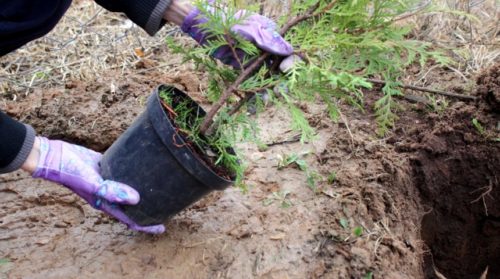
Tui landing in the Urals
- A seedloves are placed in the prepared landing point, they are putting all the roots and fall asleep by the prepared soil, periodically sealing it so that the so-called is not formed. "Air Pockets".
- With the right landing (after the soil shrinkage), the root neck of the Tui seedling should be at the ground level.
- After planting, the seedlock is abundantly watered with water, and the rolling circle is mounted peat, chip or bark. Mulch allows you to keep the proper wet microclimate and protects the plant in case of frosts, but it should not cover the lower branches of the Tui so that they do not be separated.
Tui in the Urals, plant care
Thuja is considered a rather hardy plant that can grow even with minimal attention and care. Thanks to its frost-resistant qualities, many varieties of the Tui are perfectly acclimatized and spread in the Urals. But so that the coniferous shrub looks as attractively and decorative, it is necessary to ensure the correct care for the evergreen plant.
The main agrotechnical techniques of the cultivation of the Tui include: watering, loosening, mulching, feeding, cutting crown, disease control and preparation for wintering.
Watering and loosening the Tui in the Urals
- Thuja is a moisture-loving plant, poorly carrying drought. Therefore, it is important to provide decorative coniferous culture timely and regular irrigation. Otherwise, Tuya cares, losing the natural color and turgor needles.
- Water over in the morning or in the evening. The average irrigation rate in the arid period is approximately 1-2 times a week.
- The young saplings of the Tui are especially needed, while plants aged 5 years and above are watered much less frequently, only in dry days.
- Thuja and sprinkle speak well. Spraying the crown can be carried out every 3-4 days. Such a "simple" reception will provide a massive crown growth, a healthy and fragrant kind of shrub or a tree.
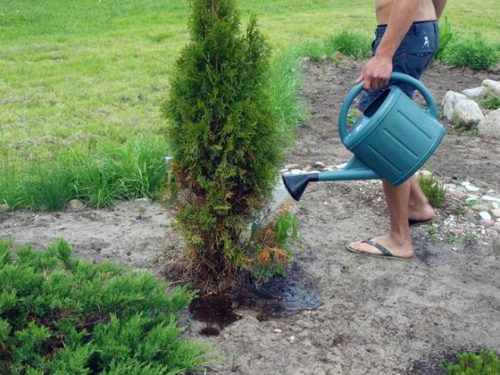
- After irrigation, the soil is mulched, which allows you to keep moisture as long as possible and prevent the appearance of weeds.
- In the absence of mulch, the ground around the plant is regularly loosen (especially after watering), removing weary grass. At the Tui varieties with surface rooting, the operation of loosening should be carried out very carefully and shallow so as not to damage nearby roots.
- In the second half of autumn, watering stops, using the plant to the upcoming wintering.
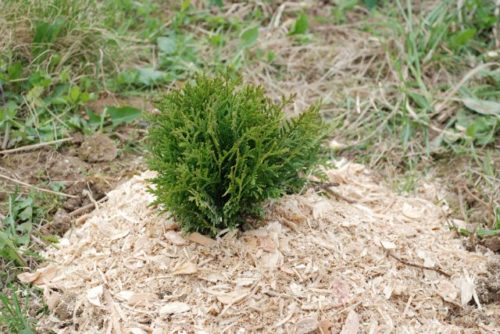
Making feed and fertilizers for Tui in the Urals
- Putting fertilizers at the plant planting stage allows not to feed the growing first 1.5-2 years.
- After that, the periodic (spring) introduction of mineral fertilizers intended for coniferous trees with a predominance of nitrogen is recommended. More than once a year, it is not recommended to feed it to avoid active growth of the plant and disruption of the crown decorativeness.
- Fertilizers in the Urals are brought in the spring when the soil completely excited and passed the threat of return freezers.
Tui trimming in the Urals
- Trimming or haircut is the most important stage that allows you to preserve and improve the decorative signs of a variety of the Tui. Although such types of Tui are cultivated, which absolutely do not need the formative haircut, naturally preserving natural decorativeness.
- Forming or curly trimming is carried out in spring, after the vegetative activation of the plant (before the blooming of the kidneys) and at the end of summer. Do not regret the branches during the trimming of a shrub or a tree: the more shoots it is skewed, the more magnificent will be Crohn. Tuya perfectly tolerates trimming and is pretty quickly restored.
- Crop the branches and "strik" are starting from the 2nd year of the plant's life, carrying out this operation annually. At the same time, it is necessary to form the natural form of the krona of the car, without rewinding the cone-shaped crown on the spherical, or vice versa.
- Prothesing of shoots is carried out by a sharp tool, no more than 1/3 of the escape. Such a delicate relation allows the plant to avoid strong stress after trimming and rapidly grow.
- In the Urals, the first frosts occur already in the first half of autumn, so the re-forming trimming is carried out in July - August.
- Throughout the season, a light sanitary and corrective trimming is carried out, removing dry, damaged, dying and highly discrepancies.
Diseases and pests of Tui in the Urals
- Incorrect care, infecting diseases or pest attacks can cause irreparable harm to the coniferous plant.
- From pests are the most dangerous is the tower mole and the tower soap. Insecticides are used in the fight against tiny parasites - cypermethrine (accuters) and carbofos (phytodeterm), respectively. When attacking the colonies of T'li, Thuja turn yellow and drops his cheva. Regular inspection of shrubs, sanitary trimming, cleaning of the cortex from dry last year's parts will allow in a timely manner to detect pests and prevent their further distribution.
- If the plant begins to shrink the web - it means that the thuja was attacked by a paustic tick. Without processing, the coniferous shrub turns yellow and falls. For the treatment of culture, you can use the infusion of garlic or dandelion, and in case of strong infection - use special acaricides.
- Thuja is also susceptible to the following fungal diseases: fusariosis, cytospose, brown spider. In the event of a lesion (the shoots become brown, the needles turn yellow), the plant is sprayed with fungicides: burgundy liquid or a solution of potatocidation, repeating the processing every two weeks to complete "recovery".
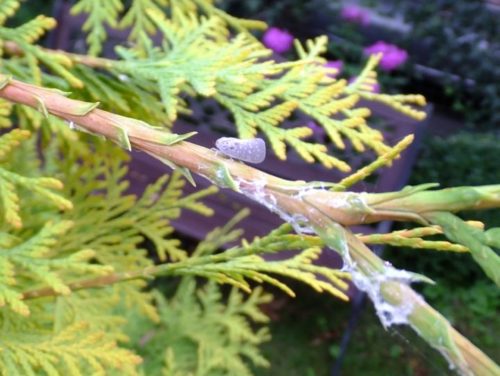
Tui transplant in the Urals
- In case of transplanting the adult plant of the Tui to a new place, it is necessary to first "write" a shovel section of the earth around the plant, observing the distance from the barrel of at least 40-50 cm.
- After that, the plant is digging together with the planned rolling circle, holding an earthen com near the roots. Trying to preserve the natural square of the earth, the plant is planted on a new place.
- For large instances of the Tui, the "pinching" process is better to spend in advance, about a year before the transplant. Then, the shrub will have time to increase young roots and is better attached to a new place.
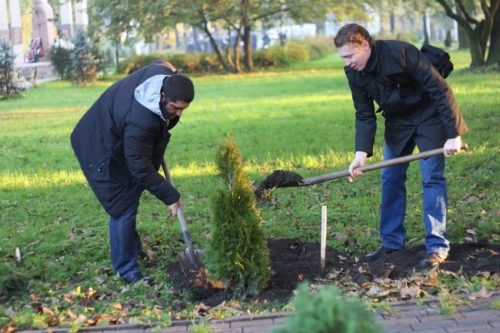
Preparation of Tui in the Urals for Winter
- In the fall, the plant begins to cook for winter: stop watering, trimming and feeding.
- In order to avoid frost and the rollers of snow branches, it is preparing in the Urals in the Urals in advance. To do this, the high trees are gently tightened and bind to the rope (twine), the lowered thui is covered with a snack or cardboard. No need to bend the branches of the car, as it will be difficult for it to restore the original form.
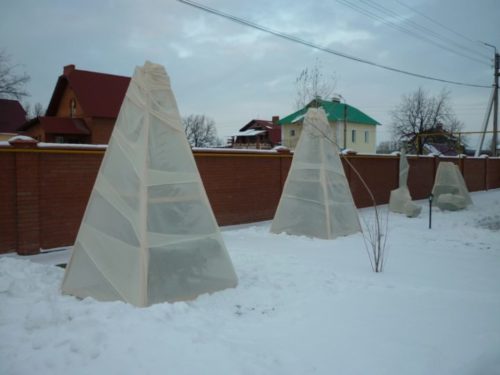
- During the preparation of the Tui to shelter, it is first highly plunged and mulched a rolling circle.
- For young and rapid plants it is better to make small greenhouses or use special covers.
- Many varieties of adult bu teu can do in winter and without a special shelter, but the mulch on the site should be present at mandatory. Fat layer of peat or sawdust will prevent the root system freezing.
- At the end of winter, so that the thua does not "be burned" with bright sunlight, it is covered with any non-woven material (for example, spandbon or loans).
- Remove the shelter in the spring, after the onset of stable positive temperature.

In the conditions of the Urals, the most unpretentious and viable are the small varieties of the Tui, which are easily covered with snow and are saved from frost or spring burns.
Tui reproduction in the Urals
Tuya is multiplied as vegetative (cuttings, division of the bush) and generative (seeds) in ways.
- The reproduction of seeds is suitable for the reproduction of species varieties of the car, with the mandatory process of stratification of the seed material. The seed method does not preserve the varietal signs of parental specimens and will require 3 to 5 years. Stratified fresh seeds are sown in spring on a privided bed and sprinkled with sawdust. Watering, feeding and mulching of shoots - mandatory caregivers. For the winter, shoots are carefully covered.

- In reproduction with green cuttings, it prepares in advance the shoots of the current year, about 20 cm long. And the cuttings are not cut off, but take off with the "heel". The shoots are planted into the soil and covered with a film, building a mini-greenhouse. Regular spraying with water, airing with a subsequent temper, will provide rapid rooting of shoots. For the winter, the cuttings are covered with a sweetheart and a film.
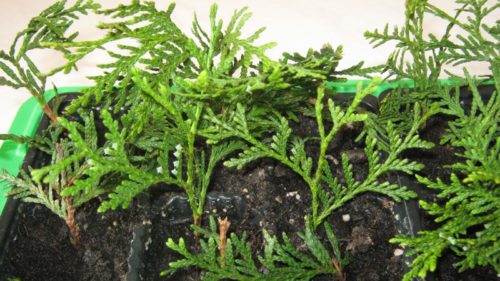
Tuya in landscape design
Thuja is one of the most common and basic plants used in landscape design and garden gardening. The regions of the Urals are also no exception.
The variety of shapes, sizes and color of the needle allows the use of the Tui varieties as central, single landings and as group plantings.
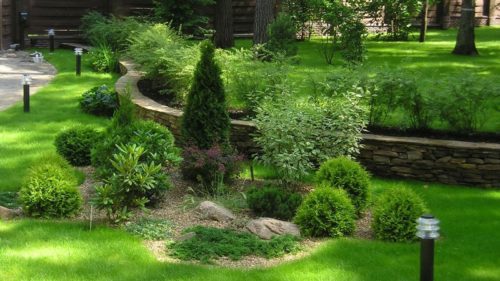
When decorative alley, borders, alive hedges, Thuja is simply indispensable! Excellent also looks a plant planted in a container or garden pot.
Spherical, cone odor or colonum; scattered or compact; Green or golden yellow, - such a variety of thuly varieties allows you to create real works of landscaped art.
Combining and combining coniferous "beauties" can achieve fabulously beautiful landscapes and scenery.
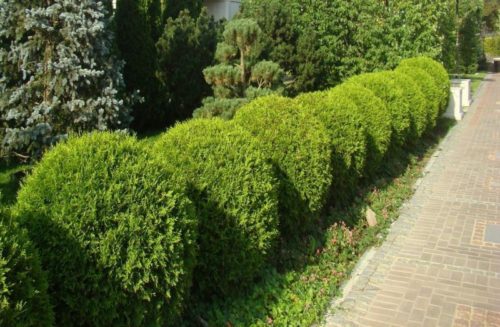
Thus, Thuja in the Urals is a completely natural phenomenon, given its endurance, unpretentiousness and frost resistance. Well, to preserve all the decorative charm of the evergreen conifer, will help the correct plant care and compliance with the key rules of agrotechnology.

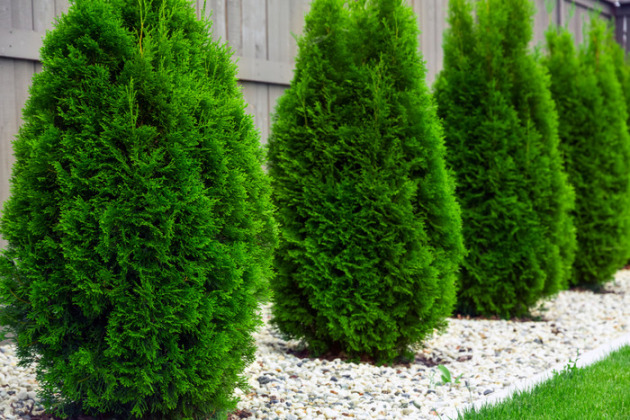
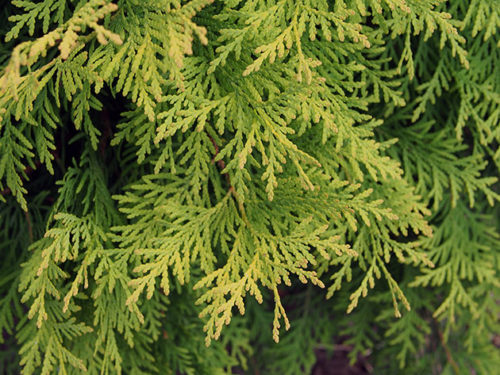
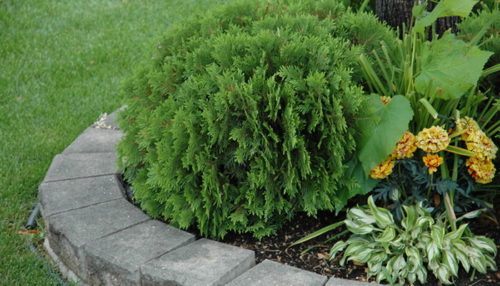
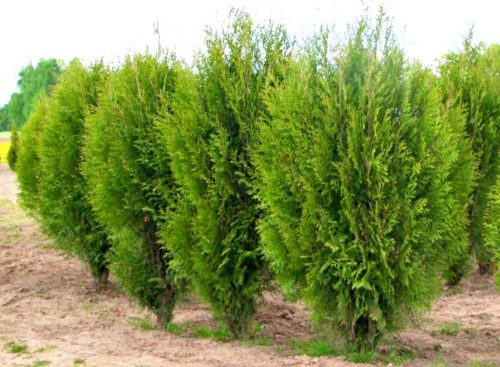
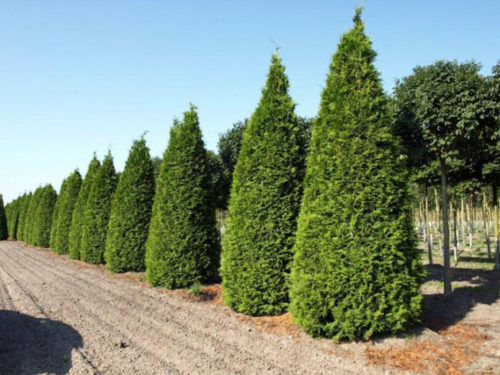
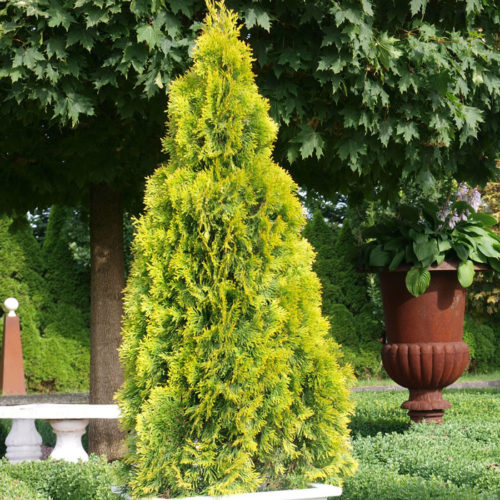
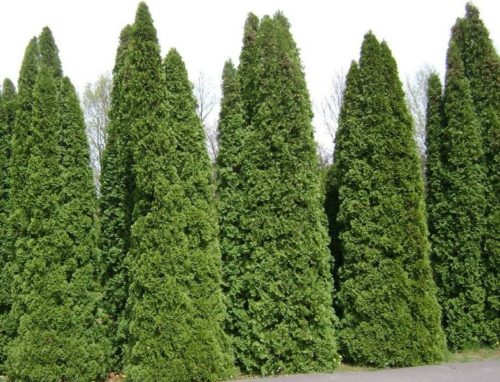
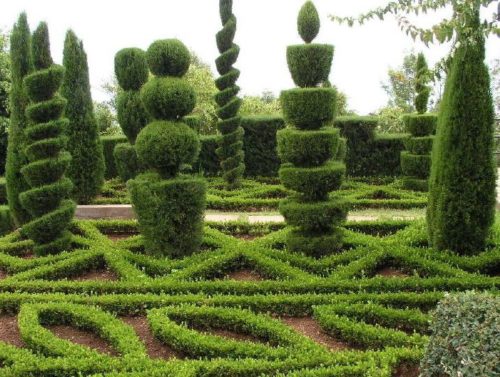
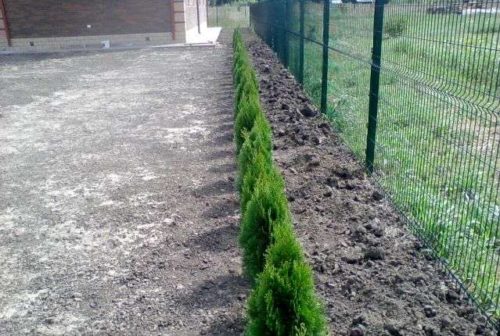
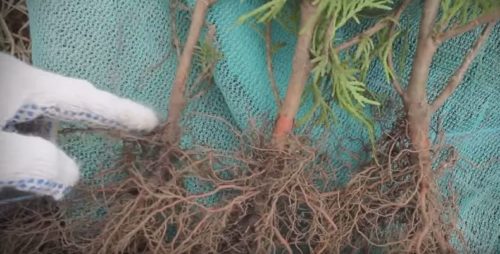
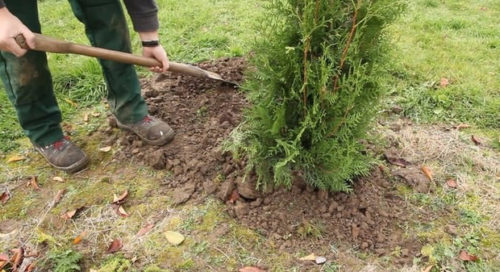
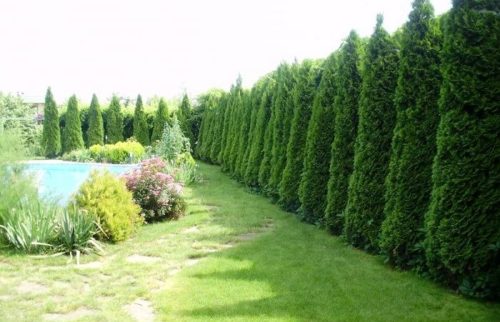
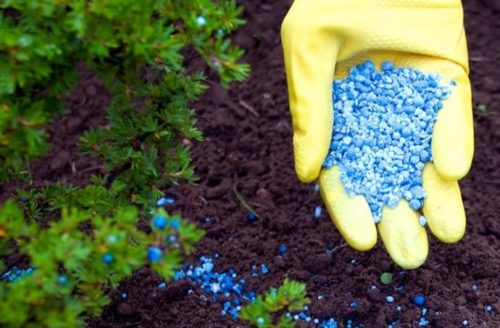
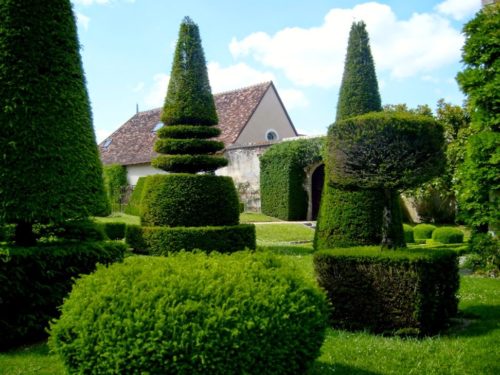
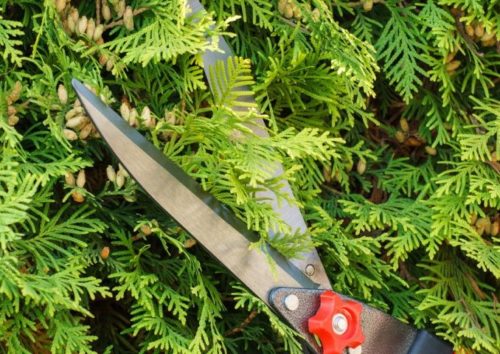
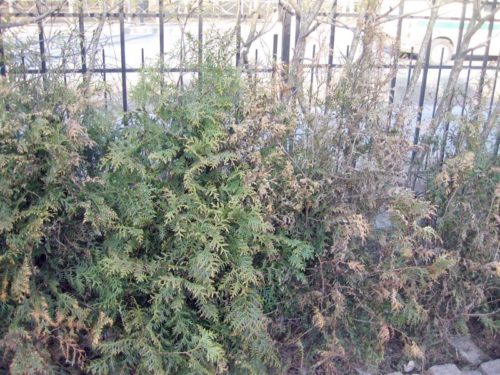
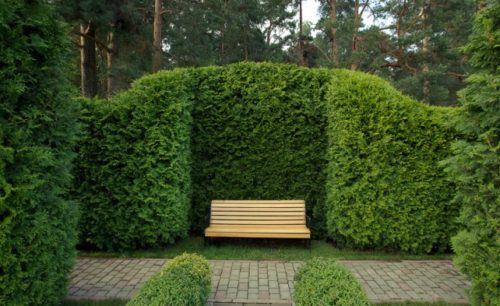
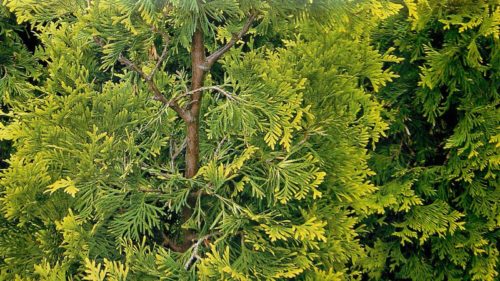
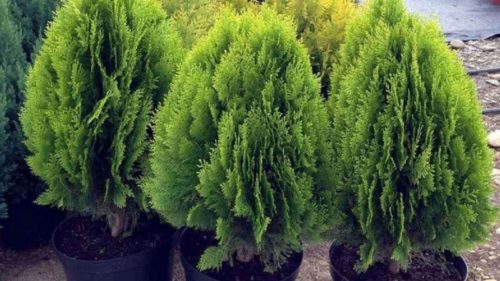
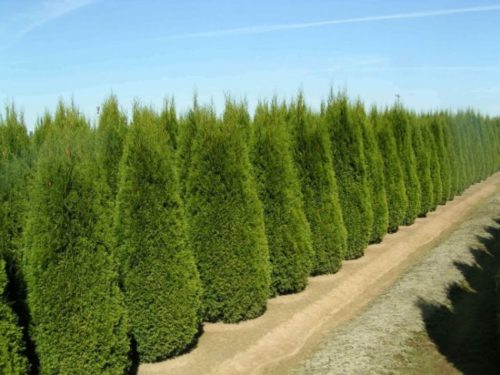

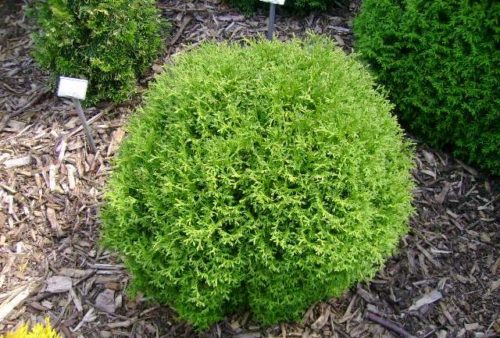












 Start a discussion ...
Start a discussion ...